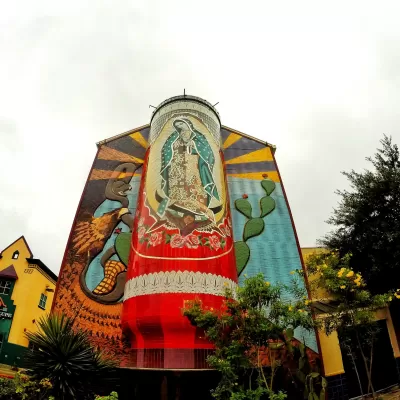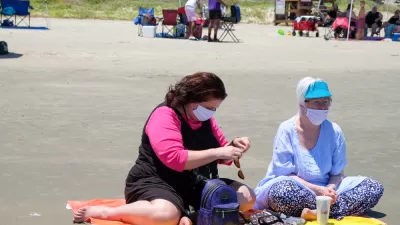Latino activists look to preserve a 'Chicano epicenter,' recently given the designation of a UNESCO site.

"The Westside alone, where 95 percent of the population is Hispanic, stands as a rare condensate of history, unseen elsewhere in the city or in other Chicano epicenters like Los Angeles or east Austin," Johnny Magdaleno writes for Next City. Activists in the area are looking to protect and maintain the area's culture in a growing San Antonio.
Holding on to that culture presents an interesting challenge because, as Claudia Guerra of the city's Office of Historic Preservation put it, "It's more difficult when you have a place whose significance comes not from the architecture but the people or the culture that's associated with it.”
In one way, historic preservation can be used as a tool, not just to maintain historic buildings, but also to slow gentrification. "In San Antonio, houses that receive historic designation have their pre-designation property tax rates frozen for the following 10 years if homeowners invest in rehabilitating the structure — a medium-term approach to slowing tax hikes if nearby real estate markets turn hot," Magdaleno reports. Residents hope that the neighborhood can maintain its character better than other hot property markets like east Austin, where Blacks and Latinos were largely displaced.
FULL STORY: Mexican-American Preservationists Are Saving San Antonio’s Urban Fabric

Maui's Vacation Rental Debate Turns Ugly
Verbal attacks, misinformation campaigns and fistfights plague a high-stakes debate to convert thousands of vacation rentals into long-term housing.

Planetizen Federal Action Tracker
A weekly monitor of how Trump’s orders and actions are impacting planners and planning in America.

In Urban Planning, AI Prompting Could be the New Design Thinking
Creativity has long been key to great urban design. What if we see AI as our new creative partner?

King County Supportive Housing Program Offers Hope for Unhoused Residents
The county is taking a ‘Housing First’ approach that prioritizes getting people into housing, then offering wraparound supportive services.

Researchers Use AI to Get Clearer Picture of US Housing
Analysts are using artificial intelligence to supercharge their research by allowing them to comb through data faster. Though these AI tools can be error prone, they save time and housing researchers are optimistic about the future.

Making Shared Micromobility More Inclusive
Cities and shared mobility system operators can do more to include people with disabilities in planning and operations, per a new report.
Urban Design for Planners 1: Software Tools
This six-course series explores essential urban design concepts using open source software and equips planners with the tools they need to participate fully in the urban design process.
Planning for Universal Design
Learn the tools for implementing Universal Design in planning regulations.
planning NEXT
Appalachian Highlands Housing Partners
Mpact (founded as Rail~Volution)
City of Camden Redevelopment Agency
City of Astoria
City of Portland
City of Laramie





























